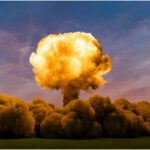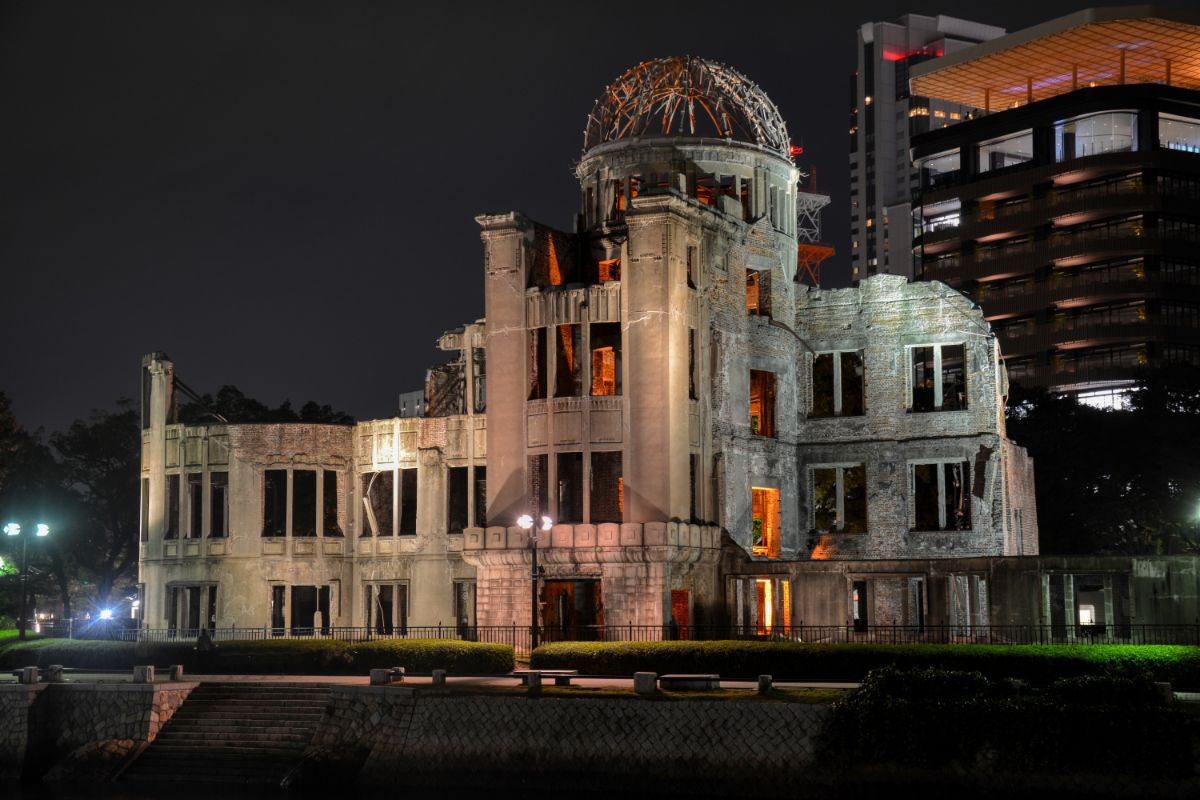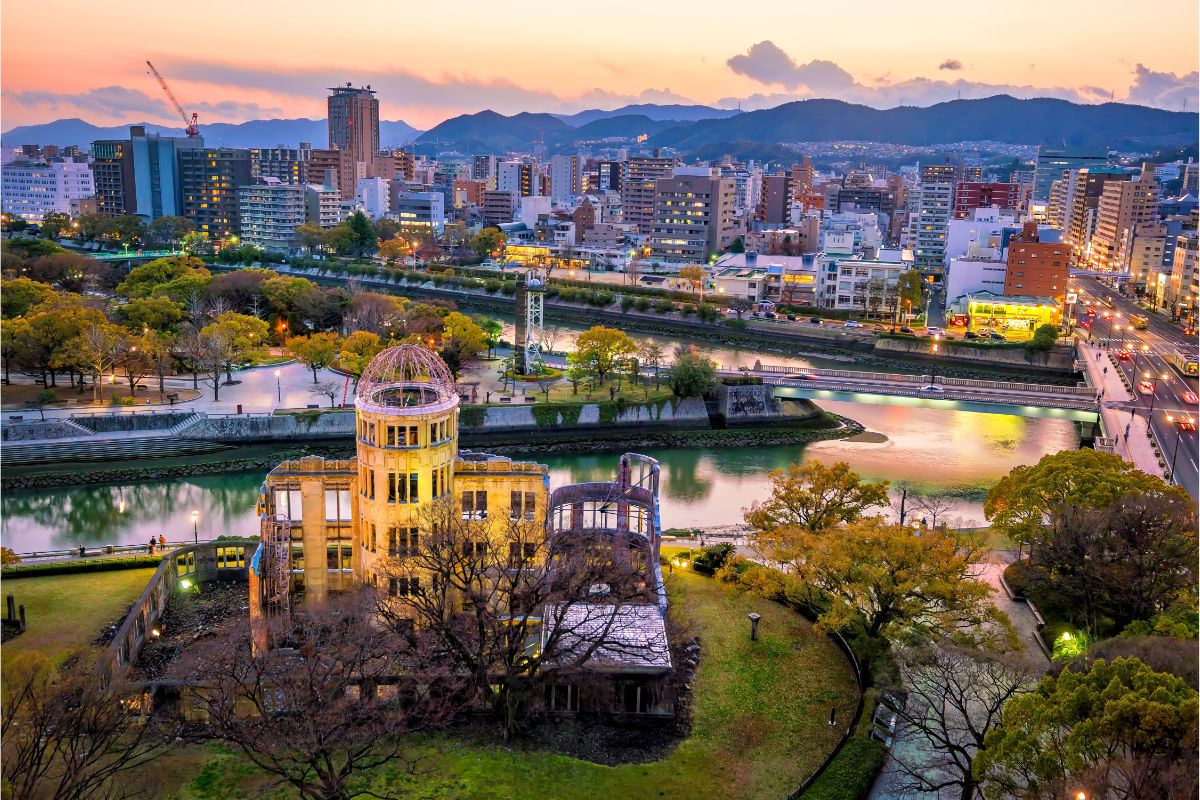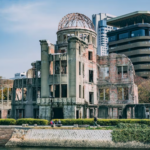There was one man who intervened to ensure that Kyoto was removed as the prime target for the A-Bomb. Surprisingly, he was not Japanese but an American, the US Secretary of War, Henry L. Stimson.

Noting that Kyoto was Japan’s ancient capital and a ‘shrine of Japanese art and culture’, meant that he wisely anticipated a vicious reaction from the Japanese, and the world at large, were it to be destroyed.
The Atomic Age
When you think of the Atomic Age, pictures of mushroom clouds and utter devastation spring to mind.
The cities of Hiroshima and Nagasaki were destroyed by atomic bombs to bring an end to World War II yet Kyoto could easily have been a prime target.
There were three days between the two bombs, Hiroshima was an unsuspecting target on 6th August 1945 and the United States Air Force struck again to annihilate Nagasaki.
Six days after the second strike, Japan had surrendered unconditionally yet why was Kyoto switched as a target considering its importance?
Why Was Kyoto Removed As The Prime Target For The A-Bomb?
That Kyoto was spared at the misfortune of Nagasaki can be attributed to a single man. Henry L. Stimson was given a list of cities on 12th June 1945 that were selected for bombing and immediately opposed Kyoto as a target.
The city was deemed far too culturally and historically important by Stimson to be wiped off the map and he went even further to defend the city.
Not only did he refuse that the city be subject to an A-bomb but that it would not be a target in any subsequent conventional air raids too.
Much of Kyoto remains as it looked centuries ago and a lot of that is down to Stimson and his intervention.
The US Secretary of War held conversations with the Commander of the Army Air Force, General Arnold, to order that no bombs would fall on Kyoto.
This could be deemed as a practical order as Stimson had seen the reaction in Germany to the fall of Dresden following an Allied air raid and firestorm. Stimson also had a personal connection to Kyoto as he spent a happy honeymoon there.
The Realpolitik Reason
Stimson was no fool and though he remembered his honeymoon well, he knew that the fallout from Kyoto’s destruction would be difficult to contain.
Aside from the concern over losing so much of Kyoto’s religious and cultural significance, there was another Realpolitik reason for sparing the city too.
If Kyoto were to suffer utter annihilation from the A-bomb, there was an increased likelihood that the Japanese would fall into Russia’s arms following the war.
President Truman’s relations had cooled with Russia and there was little desire to assist the communist’s cause in Asia.
Why Kyoto Was Valued So Highly

The city of Kyoto was Japan’s imperial capital for over a millennium and was key to traditional Japanese culture. Over 2,000 temples were housed in Kyoto and many would have been destroyed had the A-bomb hit.
That includes imperial palaces, Shinto and Buddhist palaces as well as pavilions and royal tombs for ancient Japan’s emperors.
Even the streets are known to be valuable for featuring so much traditional and unique Japanese architecture.
Kyoto was valued as a tourism destination too with visitors favoring the tea ceremonies and the cherry blossoms in full bloom.
Having spent his honeymoon there, Stimson would have been aware of the city’s narrow streets populated by geisha (see also ‘15 Interesting Facts About Geisha‘). Despite those ancient and traditional features, the city was identified as a target early on during the Manhattan Project.
It was even top of the list for targets formulated by scientists, US army officers, and military generals, according to the minutes of a second ‘Target Committee’ meeting as late as 11th May 1945.
At the time, Kyoto was an urban industrial area and was home to over one million people as well as 17 World Heritage Sites.
As the former imperial capital of the country, many inhabitants had moved there from cities that had been hit by bombs. Many of Japan’s industries had moved to Kyoto which meant major factories were important targets (see also ‘What Are The Major Industries In Tokyo?‘).
The city had also been spared from being bombed already and was still the location for many universities.
Kyoto was therefore considered to be an ‘intellectual center; for the country and was thus classed as an ‘AA target’ in the ‘Target Committee’ meeting along with Hiroshima.
By destroying Kyoto, many thought that there would be a significant impact on the Japanese psyche too.
Thankfully, President Truman had been personally persuaded by Stimson to remove the city from the list due to its cultural importance and Japan eventually surrendered in any case.
The Importance Of Measuring The Impact Of The A-Bomb
On April 27th 1945, the initial ‘Target Committee’ was held to discuss which cities would be targeted for the A-bomb.
There were certain criteria for cities to be named on the list as they had to be of high strategic value and be large urban areas. The size of the cities had to be over three miles in diameter and the A-bomb would use visual targeting instead of radar.
A list was whittled down to four but the current state of the cities was considered, cities that had been bombed would prove harder to use to measure the impact of the A-bomb.
Tokyo had already been bombed and burned out so Hiroshima was initially named the number one target followed by Kyoto and Yokohama (see also ‘Quality Of Life Within The City Of Yokohama, Japan‘).
As well as being a major rail connection between Tokyo and Osaka, the city had many wooden residential houses and their flammability was deemed important.
On the second ‘Target Committee’ meeting, the burst altitude of the bomb was discussed as well as calculations made for the number of ‘light’ buildings that could be destroyed.
At that point, Kyoto was bumped up to the number one spot, and a further point was made that the city was home to intellectuals who could witness first-hand the significance of the weapon.
Final Thoughts
A target map was created for Kyoto as the potential target for an A-bomb and an aiming point was made. The city was added to the list of ‘reserved areas’ so that it was not to be bombed so the impact of the A-bomb could be measured easier.
Thankfully for Kyoto, Henry L.Stimson argued that the city had too much cultural and historical importance to be a target.
Stimson had spent his honeymoon in the city and recognized that annihilating Japan’s former imperial capital could have forced the Japanese into Russia’s arms.
Frequently Asked Questions
Why Was Hiroshima Picked As A Target For The A-bomb?
Targets for the A-bomb were selected due to their strategic value with Hiroshima seen to have high military importance. The city had also been relatively untouched by any previous bombing raids.
That meant that the US military could fully judge the impact of the A-bomb and successfully measure the effects.
Why Wasn’t Tokyo Picked As A Target For The A-bomb?
Tokyo (see also ‘Why Is Tokyo Called Tokyo?‘) was the seat of the Emperor and during the Second World War remained the base for many high-ranking military officers. If Japan was to surrender, it would have been easier to do so without killing the main negotiating parties.
- 16 Best Websites To Watch Japanese Movies With English Subtitles - May 11, 2023
- Is ZIPAIR The Best Airline For Traveling To Japan? - May 11, 2023
- Ryu Murakami Vs Haruki Murakami – Which One Should You Read? - May 11, 2023








